Osprey return to their nest at Youngs Point
In the spring of 2013, the Osprey had been sighted at Youngs Point, on the Trent-Severn Waterway at Lock 27, a small village just north of Peterborough, Ontario. They had returned to their nesting grounds for the season. On a trip up that way, Bob photographed and filmed the pair perched on their nest.
Youngs Point is between Katchewanooka Lake to the south and Clear Lake to the north.
The waterway between the two lakes has a couple of different channels owing to the construction of the lock. Here, we see the dam that was built across the original course of the briskly flowing waters.
Looking west from the footbridge, we see where Highway 28 crosses the narrow channel at the north end of Lake Katchewanooka, just before it breaks into Clear Lake. Young’s Point is beautifully located within close range of many large lakes. This narrow section of the waterway next to the hamlet represents a very small percentage of the boundless waters in this region of Ontario.
It is there, next to the Highway 28 bridge, that we find the Osprey nest atop a utility pole. The pair of osprey have chosen an ideal locale since they subsist almost entirely on fish. With the surrounding area spotted with freshwater lakes, the osprey have a vast area wherein to hunt for prey.
The osprey seem quite at home in their nest despite its close proximity to the highway.
Osprey build a massive structure of sticks for their aerie, using and adding to it year after year. Once the eggs are laid, the female osprey will rely on the size of the nest to help conserve heat during the incubation process. On the rainy day that Bob observed this pair, they were constantly going to and coming from the nest.
You would think that the power lines would be an issue for the osprey, but they are very adept at maneuvering around them. Osprey will build their nests at various heights, usually in isolated trees, dead or living, cliff pinnacles, artificial platforms, or even on the ground.
Osprey usually mate for life, and the breeding season varies according to latitude as this species of bird is found around the world. Now that it is spring here, in southern Ontario, the pair will begin the five-month period of partnership required to raise their young.
With her mate having taken flight again, this osprey watched the area intently. Her feathers were heavily dampened by the rain, making the slight crest on her head more pronounced. Osprey are often mistaken for Bald Eagles, but the distinctive black eye stripes or dark mask across the eyes and reaching to the sides of the neck help in making definite identification. That and the white underbellies of these fish eagles, as they are also known.
Bob watched the other osprey where it sat in a distant tree, hoping to spot a fish for its next meal. Osprey capture fish by making spectacular dives from the air and entering the water feet first. They typically take suckers, perch and sunfish from freshwater lakes and rivers.
In this video, the Osprey is trying to sight a fish in the waters below. Most birds cannot move their eyes, and so they must move their heads in order to change their field of vision. That is why this Osprey is moving its head from side to side.
These photographs from Bob’s video footage help to illustrate how an osprey’s wings have a noticeable bend and black plumage at the wrist. When in flight, the long slender wings are angled backward at the bend.
As Bob was filming and observing the ospreys fishing, two Great Blue Herons cut across the sky above him and the osprey’s nest.
Although Bob was unable to keep track of the Osprey that was sitting in the tree, he did, however, see it return to the nest clutching what looked like a fish in its claws. Sharp horny outgrowths or spicules on the soles of the ospreys’ feet enable these raptors to get a secure grip on even the most slippery of fish.
Osprey and owls are the only raptors with reversible outer toes that allow them to grasp their prey with two toes in front and two behind. This is particularly helpful when grabbing onto fish.
Bob left the two ospreys settled together in their nest, knowing that they have a long job ahead of them. The female will lay two to four eggs within a month, and then incubation of the eggs will take 5 weeks. It is a long process.
Frame To Frame – Bob and Jean

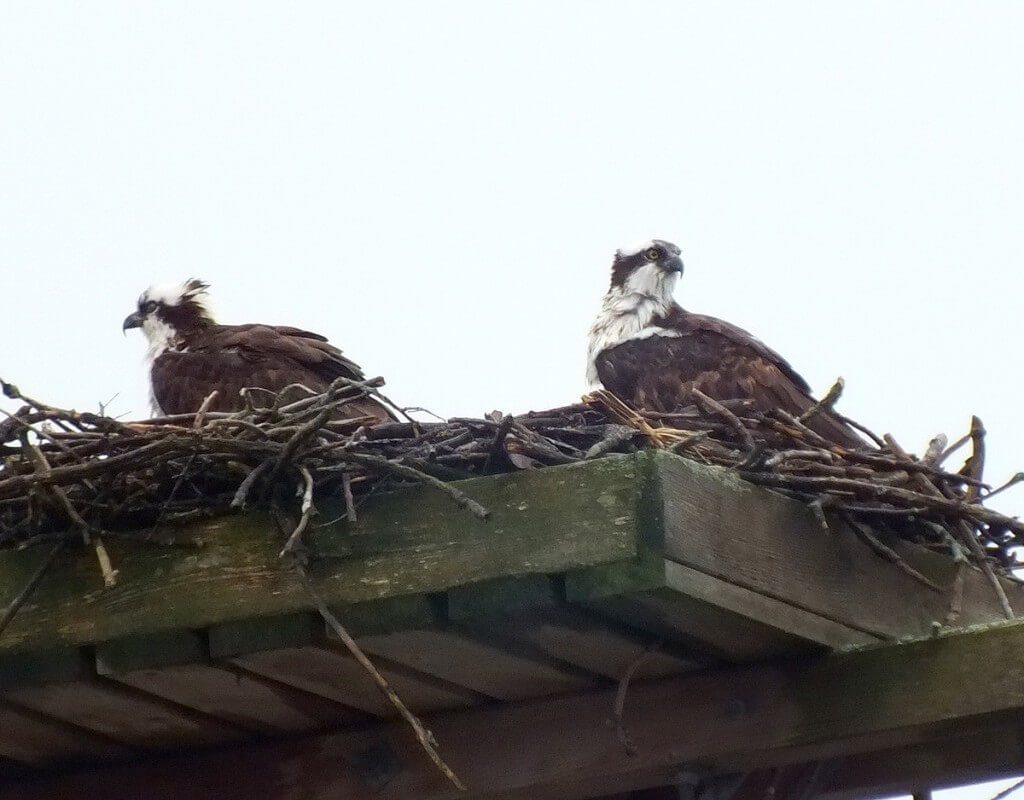

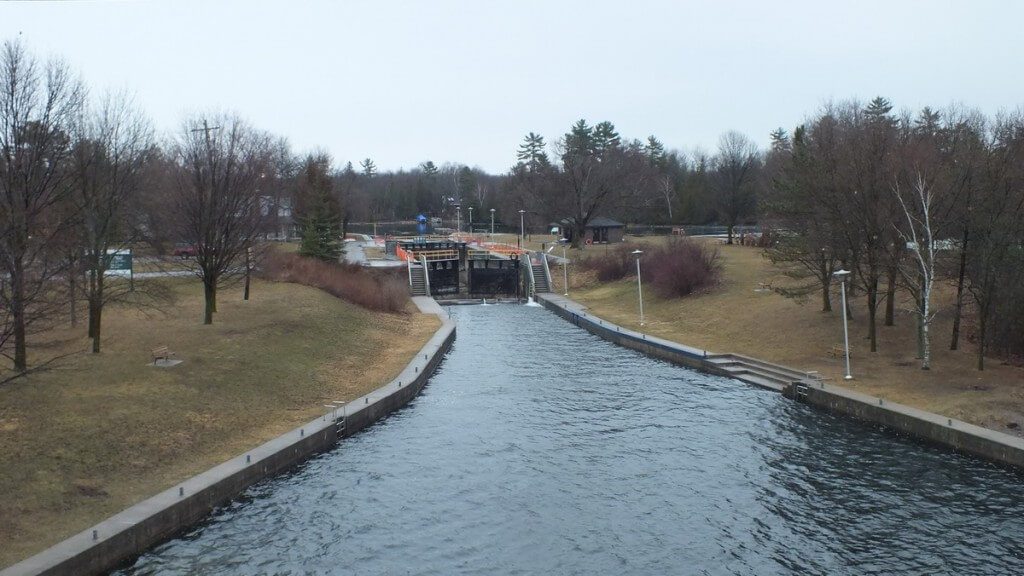
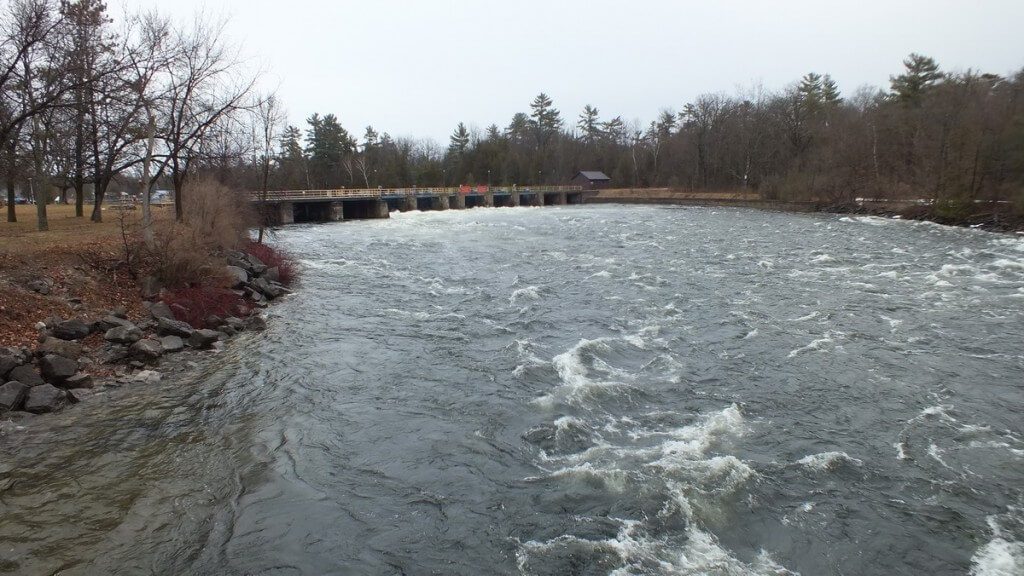
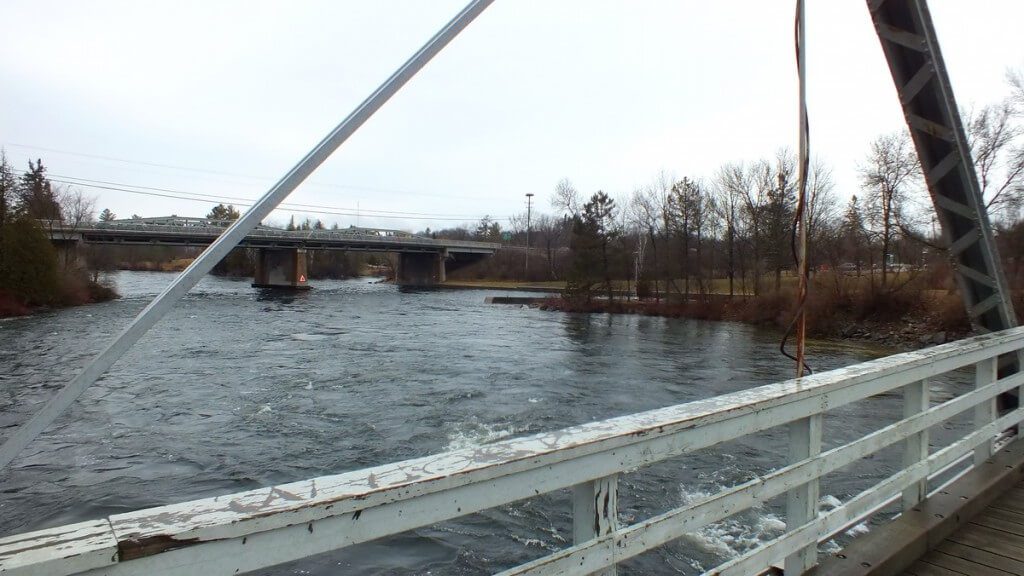
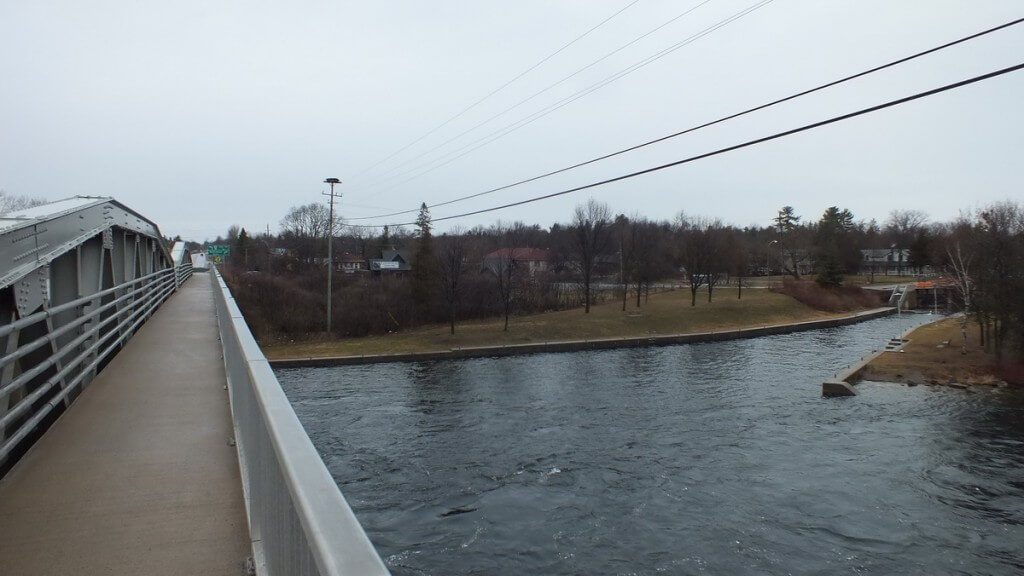
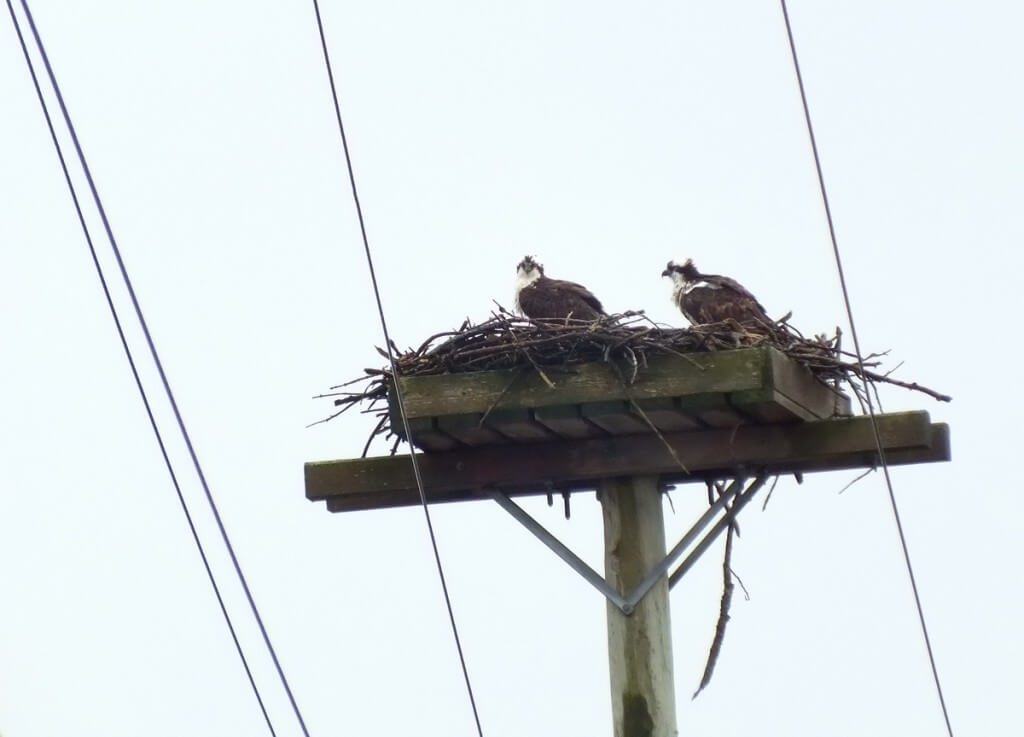

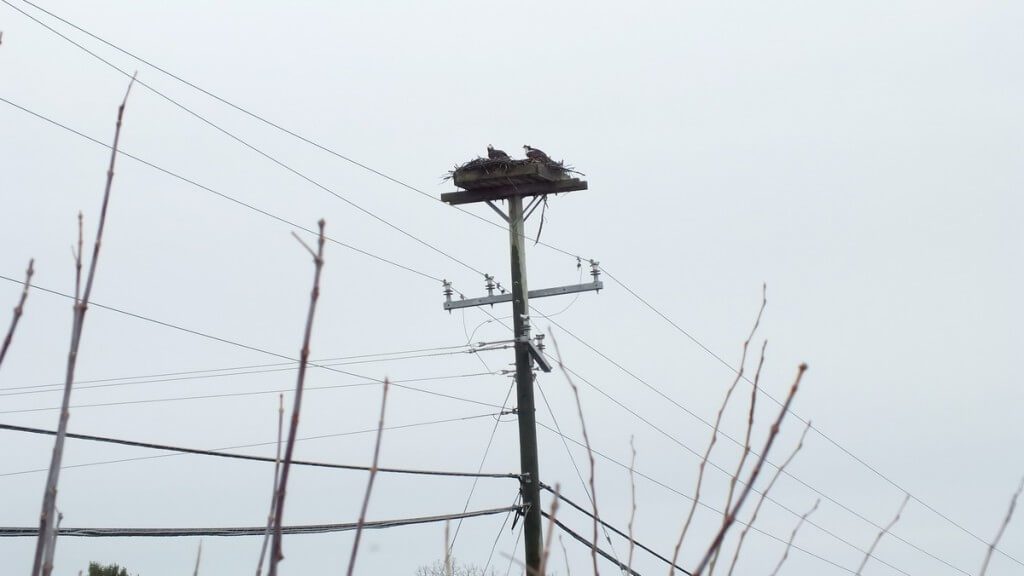
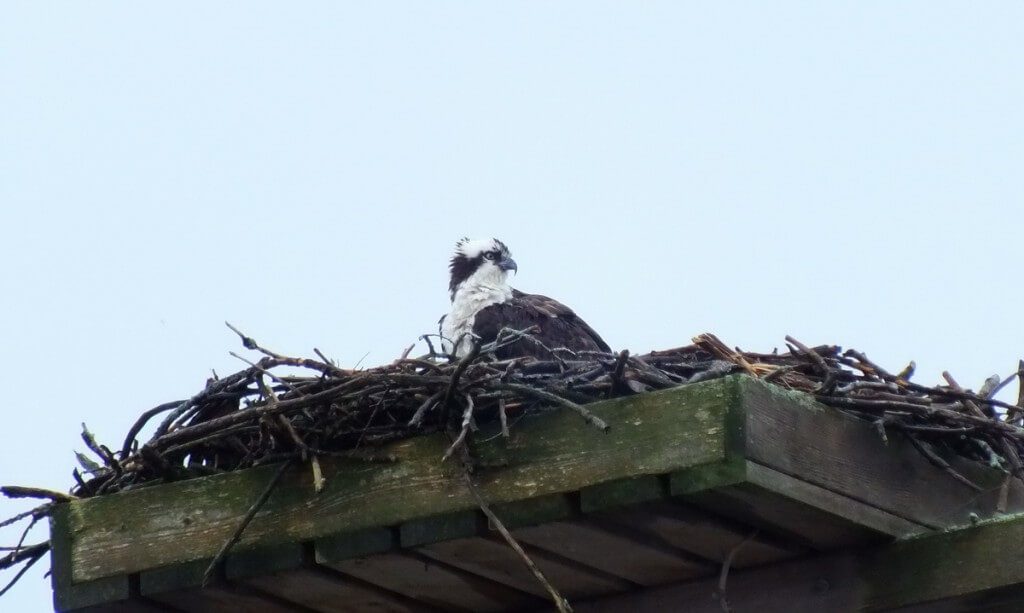

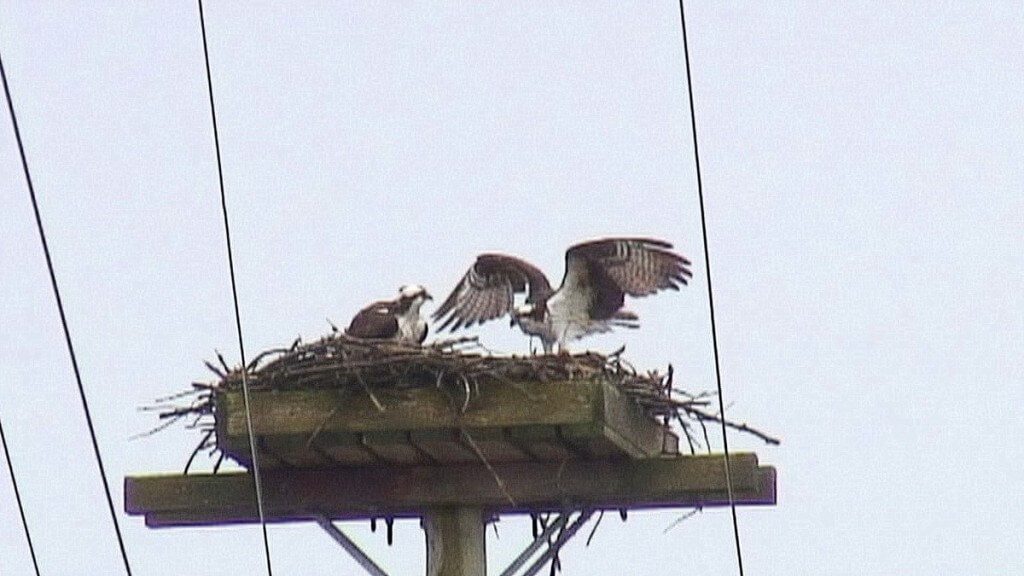

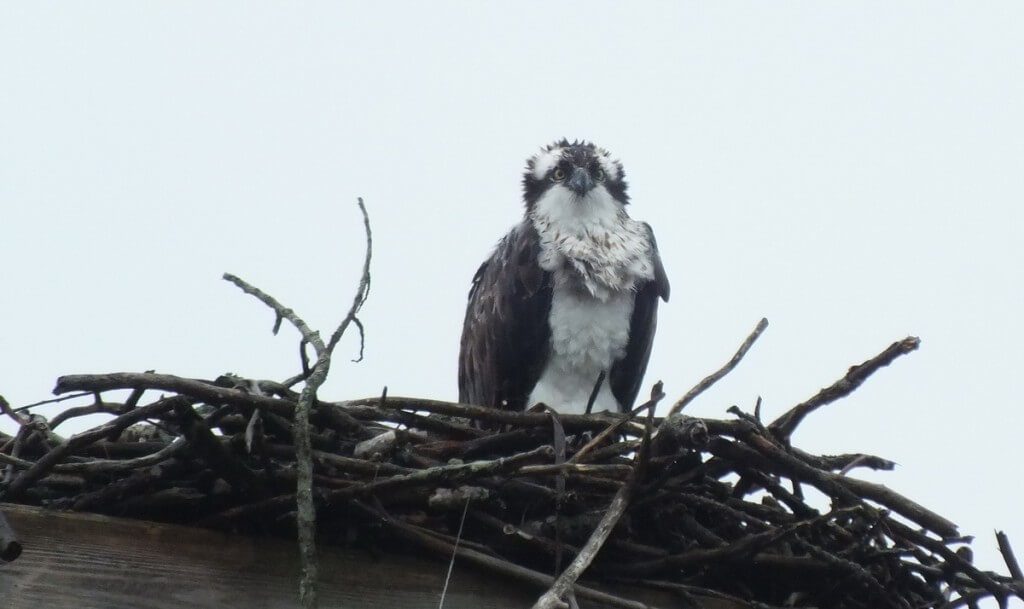
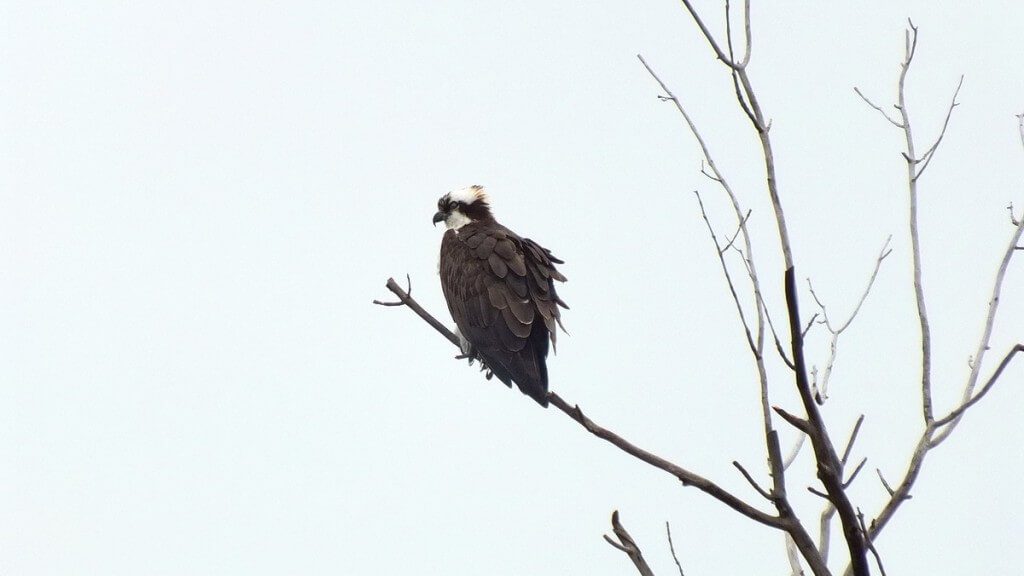
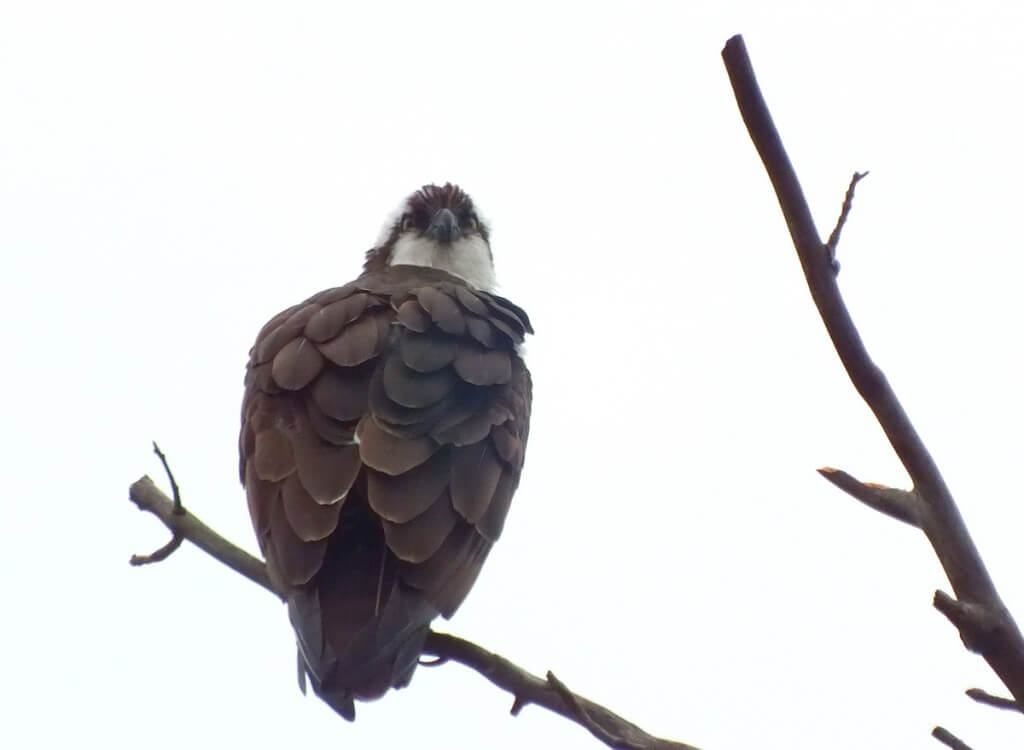

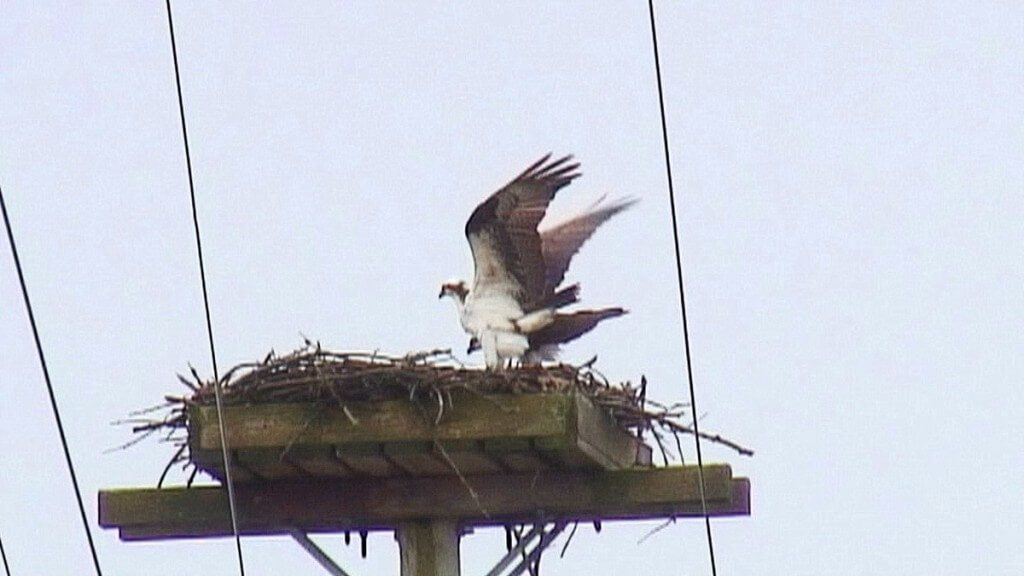

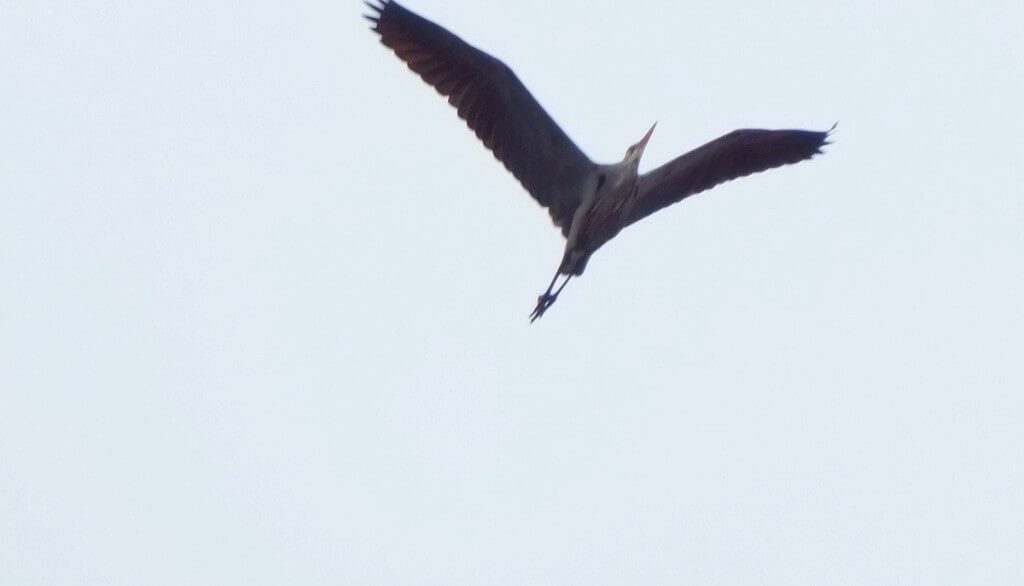

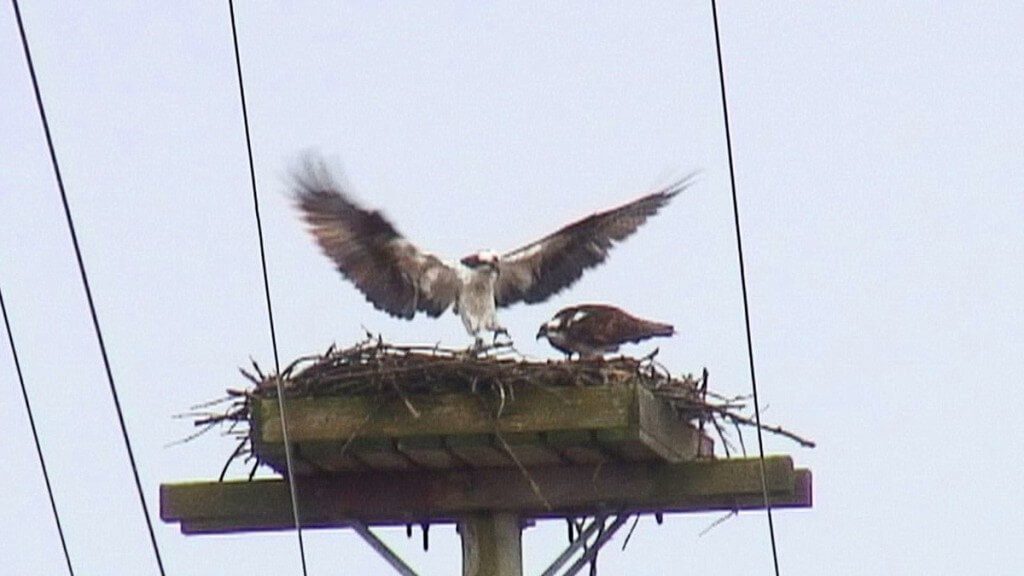

Wonderful pictures! We live in west end Peterborough beside LoggerHead Marsh and have had the opportunity this year to watch ospreys hunting over the marsh daily. What a show! They are catching something bright orange so I’m assuming it’s frogs. We use binoculars to watch them. Sometimes it will take it’s catch to a tall tree in the marsh and eat it, other times it will fly away with it. It’s a wonderful sight!
I’m glad you enjoyed reading our blog. We have been to the Peterborough area on many occasions but have never visited Loggerhead Marsh. It definitely sounds like a good spot for birdwatching!
These ospreys should be grateful that owls did not take their nest, while they were gone on their Mexican vacation.
Exactly, since we know that owls will do that.